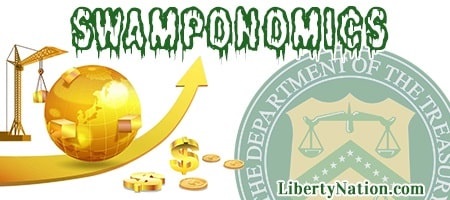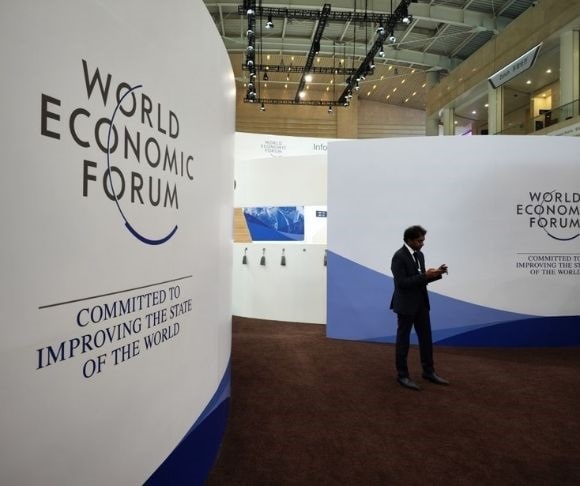Is the World Economic Forum promoting Maoism? In November 2018, Liberty Nation wrote, “Mao’s Great Leap Forward was a great leap forward in setting democidal records.” Indeed, Maoism resulted in tens of millions of deaths, driven by a toxic mix of Marxist and Leninist thought. The Great Leap Forward was comparable to every other socialist scam: sacrificing the people for the state. As the Chinese dictatorship collectivized agriculture and industry, embracing every tenet of socialism from quota systems to private property bans, the commoners were the first to suffer. But it was all championed as being for the public good. Today, the World Economic Forum is taking a page from the Mao Zedong textbook.
The World Economic Forum Goes Mao
The World Economic Forum maintains a voluminous catalog of articles, conversations, and schemes that would make a James Bond villain blush. An odious piece from June 2022 is making the rounds in the Twitterverse, entitled “Degrowth – what’s behind the economic theory and why does it matter right now?” Interestingly, the WEF concedes that it was a “radical economic theory” from the 1970s, around the time of the end days of China’s Cultural Revolution.
“Degrowth broadly means shrinking rather than growing economies, so we use less of the world’s energy and resources and put wellbeing ahead of profit,” the article states. “The idea is that by pursuing degrowth policies, economies can help themselves, their citizens and the planet by becoming more sustainable.”
But don’t panic! This does not mean you will “live in caves with candles,” according to the group. Instead, it is a matter of “living a bit more simply.” The so-called degrowthers advocate the end of relying on the gross domestic product (GDP) as a gauge of economic progress and, instead, ostensibly determine prosperity by reducing the production and delivery of energy and resources. Of course, Klaus Schwab and his globalist minions would still enjoy the fruits of economic growth while everyone else is confined to residing in coffin apartments, consuming bugs, and watching WEF-approved propaganda on their smartphones.
There are a few fundamental questions involved in this outlandish discussion. Will this type of sustainable living be mandated? Who crafts the framework for how everyone should live? What happens if somebody chooses not to comply with the idea of “living a bit more simply”? Perhaps the answer rests with all the other tyrants of the 20th century: Killing Fields, concentration camps, and gulags.
That said, the globalists’ assistants in the mainstream media are already advocating this type of poppycock. The Los Angeles Times recently asked: “Would an occasional blackout help solve climate change?” NPR informed the public: “This right wing conspiracy theory about eating bugs is about as racist as you think.” As Howard Beale shrieked in Network, “This is mass madness!”
Is It 2008 All Over Again?
 The US economy is experiencing twin deficits today: a federal budget shortfall and a current account deficit (sending more money to foreign markets than it receives). They are roughly 50% higher than during the global financial crisis of 2008. Why does this matter, anyway? Peter St. Onge, the terrific Heritage economist and Mises Institute fellow, had the best summary of twin deficits: “If you’re running twin deficits, that means your government is getting deeper into debt by sucking resources out of the private sector while your country as a whole is also getting deeper in debt to foreign countries.”
The US economy is experiencing twin deficits today: a federal budget shortfall and a current account deficit (sending more money to foreign markets than it receives). They are roughly 50% higher than during the global financial crisis of 2008. Why does this matter, anyway? Peter St. Onge, the terrific Heritage economist and Mises Institute fellow, had the best summary of twin deficits: “If you’re running twin deficits, that means your government is getting deeper into debt by sucking resources out of the private sector while your country as a whole is also getting deeper in debt to foreign countries.”
But while this type of economic analysis is usually reserved for developing economies, experts like St. Onge argue that this is unsustainable, even for the world’s largest economy. At the same time, the US can weather the storm because of all the dollars the country has shipped across the globe for the last 50 years. Should the de-dollarization campaign accelerate even more than it is today, it could be curtains for debt-addicted United States.
“At this point, America is swimming in debt, and we become reliant on that debt,” St Onge noted. “It is cracking, and each time they patch it with yet more trillions of debt. They are kicking the can, but each kick makes it heavier and heavier. At some point, they will kick it, and it will not budge.”
Anemia or Recession?
The US economy just had a putrid showing on the data front in the last week. The numbers from July 17 to July 21 were abysmal, to say the least, forcing observers to wonder if these are indicators of an anemic or contracting economic landscape.
Let’s begin with manufacturing. The NY Empire State Manufacturing Index expanded for the second straight month, touching 1.1 in July, down from 6.6 in June. However, the Federal Reserve Bank of Philadelphia’s Manufacturing Index came in at a worse-than-expected negative 13.5. In addition, manufacturing production fell 0.3% month-over-month and year-over-year in June, and industrial output slumped 0.5% month-over-month and 0.4% year-over-year. Capacity utilization slumped from 79.4% to 78.9%.

(Photo by Scott Olson/Getty Images)
Retail trade figures fell short of consensus estimates, with sales rising just 0.2% in June, down from 0.5% in May. Retail sales have only cracked the 1% mark twice in the past 12 months (October 2022 and January 2023). The latest numbers highlighted declines in transactions at gasoline stations, building material stores, sporting goods outlets, food and beverage locations, and general merchandise vendors. But there were gains at miscellaneous retailers, digital portals, furniture places, and electronic and appliance businesses. On an annualized basis, retail sales slowed from 2% in May to 1.49% in June.
On the housing front, activity has eased amid higher interest rates and shrinking supplies. The 30-year mortgage rate dipped below 7% for the week ending July 14, and mortgage applications increased 1.1% in this span. That said, existing home sales tumbled 3.3% to 4.16 million units. Housing starts and building permits declined by 8% and 3.7%, respectively. The good news? The National Association of Home Builders-Wells Fargo Housing Market Index extended the winning streak to seven months in July, buoyed by lower inventory facilitating solid demand.
In the end, one of the chief measurements of how the US economy is performing fell for the 15th straight month in June. The Conference Board’s Leading Economic Index (LEI) dropped 0.7% in June, down from the 0.6% slide in May. Over the six-month span between December 2022 and June 2023, the LEI has plunged 4.2%. “The US LEI fell again in June, fueled by gloomier consumer expectations, weaker new orders, an increased number of initial claims for unemployment, and a reduction in housing construction,” said Justyna Zabinska-LaMonica, the CB’s senior manager of business cycle indicators, in a statement. “We forecast that the US economy is likely to be in recession from Q3 2023 to Q1 2024. Elevated prices, tighter monetary policy, harder-to-get credit, and reduced government spending are poised to dampen economic growth further.”
But President Joe Biden told everyone – while chomping on an ice cream cone – that the US economy was “strong as hell.”




